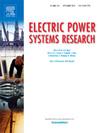Multi-level ramping strategy for multi-regional power systems considering regional flexibility
IF 3.3
3区 工程技术
Q2 ENGINEERING, ELECTRICAL & ELECTRONIC
引用次数: 0
Abstract
Existing flexibility research focuses on the balance of flexibility supply and demand within the power grid, while paying little attention to the grid’s ability to provide flexibility externally. This paper proposes a multi-level ramping strategy for large-scale power systems considering regional flexibility. Firstly, a ramping factor is introduced to evaluate the flexibility of regional power grids, and a multi-level ramping mode is used to determine the relationships among various regional power grids during flexible ramping. Secondly, the regional flexibility constraint is integrated into the flexible operation optimization framework, and a flexible ramping model is established to optimize the first-level power grid. Next, a flexible ramping dynamic programming model is established to allow nodes with sufficient flexibility to generate or absorb ramp-able power as much as possible, thereby optimizing other levels of power grids; and economic benefits of the model were quantitatively analyzed. Finally, case studies on the improved IEEE 30-Bus System and an actual large-scale power grid verify that the proposed strategy not only coordinate the distribution of ramp-able power on various nodes and lines, but also guide power transmission among levels of grids; moreover, it maintains regional grid flexibility more adequately compared to conventional models, to cope with the next round of flexible ramping.
The main contributions of this paper are: i) the introduction of the concept of regional flexibility, quantified by the ramping factor; ii) the proposal of a multi-level ramping mode, optimizing power transmission among interconnected regional grids; iii) the development of a flexible ramping dynamic programming model, minimizing the use of ramp-able power within regional grids.
考虑区域灵活性的多区域电力系统多级爬坡策略
现有的柔性研究主要关注电网内部柔性供需的平衡,而很少关注电网对外提供柔性的能力。本文提出了考虑区域灵活性的大型电力系统多级爬坡策略。首先,引入爬坡因子来评价区域电网的柔性,并采用多级爬坡模型来确定各区域电网在柔性爬坡时的相互关系。其次,将区域柔性约束纳入柔性运行优化框架,建立柔性爬坡模型对一级电网进行优化;其次,建立柔性爬坡动态规划模型,使具有足够灵活性的节点尽可能地产生或吸收可爬坡功率,从而优化其他各级电网;并对该模式的经济效益进行了定量分析。最后,对改进后的IEEE 30总线系统和实际大型电网进行了实例研究,验证了所提策略不仅能协调各节点、各线路上可匝道功率的分配,还能指导各级电网之间的电力传输;此外,与传统模式相比,它更充分地保持了区域电网的灵活性,以应对下一轮的灵活爬坡。本文的主要贡献有:1)引入了区域灵活性的概念,并通过爬坡系数进行量化;二是提出多级爬坡模式,优化互联区域电网之间的电力传输;Iii)开发灵活的爬坡动态规划模型,最大限度地减少区域电网内可爬坡功率的使用。
本文章由计算机程序翻译,如有差异,请以英文原文为准。
求助全文
约1分钟内获得全文
求助全文
来源期刊

Electric Power Systems Research
工程技术-工程:电子与电气
CiteScore
7.50
自引率
17.90%
发文量
963
审稿时长
3.8 months
期刊介绍:
Electric Power Systems Research is an international medium for the publication of original papers concerned with the generation, transmission, distribution and utilization of electrical energy. The journal aims at presenting important results of work in this field, whether in the form of applied research, development of new procedures or components, orginal application of existing knowledge or new designapproaches. The scope of Electric Power Systems Research is broad, encompassing all aspects of electric power systems. The following list of topics is not intended to be exhaustive, but rather to indicate topics that fall within the journal purview.
• Generation techniques ranging from advances in conventional electromechanical methods, through nuclear power generation, to renewable energy generation.
• Transmission, spanning the broad area from UHV (ac and dc) to network operation and protection, line routing and design.
• Substation work: equipment design, protection and control systems.
• Distribution techniques, equipment development, and smart grids.
• The utilization area from energy efficiency to distributed load levelling techniques.
• Systems studies including control techniques, planning, optimization methods, stability, security assessment and insulation coordination.
 求助内容:
求助内容: 应助结果提醒方式:
应助结果提醒方式:


